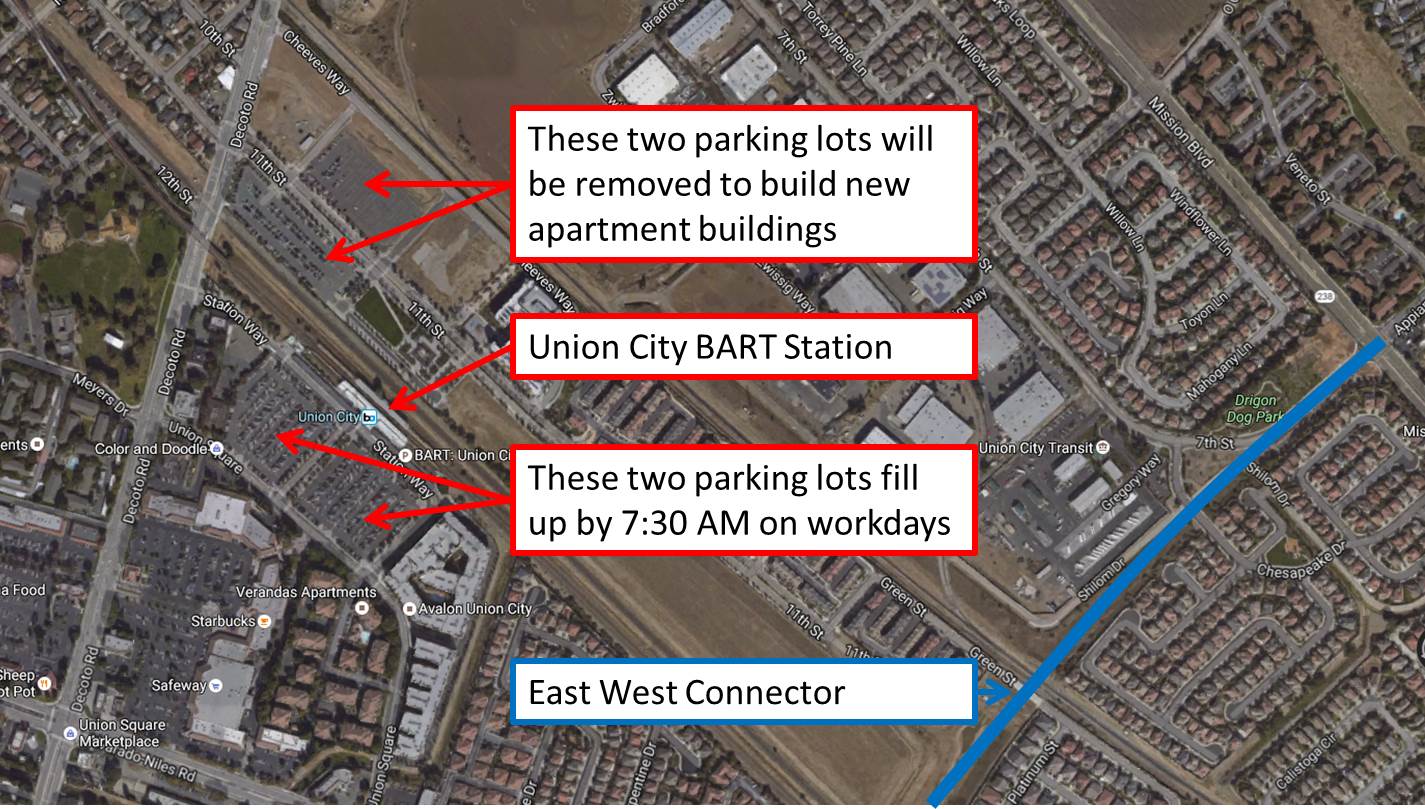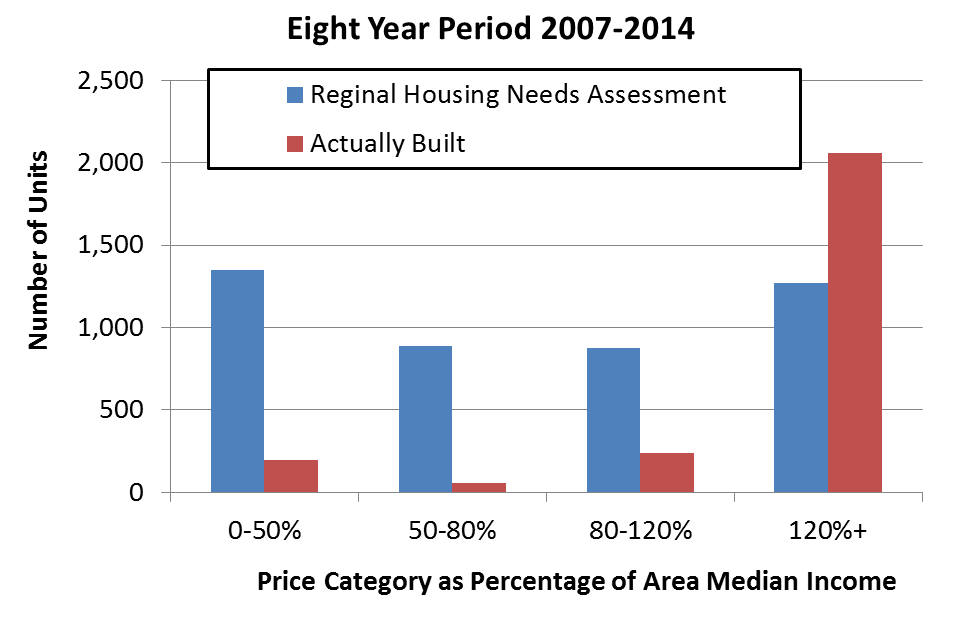Myth #1: The East West Connector Benefits Local Residents and Alleviates Congestion
FALSE. The East West Connector primarily benefits developers and Tri-Valley commuters who cut through Niles Canyon to the Dumbarton Bridge.
The East West Connector hurts local residents by converting their neighborhoods into drive thru zones and more than doubling traffic through residential neighborhoods.
The true purpose of the East West Connector is two-fold:
1. Provide additional car access to Open Land for development
- Approximately 3,000 homes can be constructed on land that is currently open space. This land falls into two categories.
- About 2,000 homes can be built on open land within easy walking distance of the BART station and already accessible from Decoto Rd. This land is ideally suited for development into a transit oriented development (TOD), a type of development which encourages transit use, discourages driving and promotes walk-able neighborhoods. Unfortunately, the EWC is highly counterproductive to this goal, as it creates cut through traffic on 11th St on the order of 2,000 cars/hour. But by building the EWC, developers can attract additional demand from auto-commuters who compete with demand from BART commuters.
- The remaining 1,000 homes can be built on land currently used by the organic Ramirez Farm and on the pristine wildlife refuge adjacent to the Old Alameda Creek (see Impact on Our Communities).
- The estimate of 3,000 new homes assumes that developers will not succeed in future lobbying efforts to open protected hill-side land for development (recall 2014 Union City Measure KK). However, the access provided by the EWC removes a major obstacle to building on the hills, potentially increasing the number of added households (and thus cars) many-fold.
2. Serve as an element of the planned high speed shortcut from I-680 to the Dumbarton bridge via Niles Canyon.
- This approach is called piece-mealing. Knowing that most residents would object to such a highway shortcut through residential areas, a large project is broken into pieces and sold to residents as local congestion relief/safety improvements.
- The East West Connector needs to be considered as one element of a larger project (see State Route 84) . Most notably, this includes the Niles Canyon “Safety” Improvements, which increase the design speed of Niles Canyon Road by replacing slow winding sections with straight fast ones, enabling more throughput on this scenic highway (example).
In light of these factors, it is not surprising that the county’s own traffic projection forecast that the East West Connector will carry approximately 5,000 cars/hour during commute times. Combined with Decoto Rd. traffic, which will remain bad, the combined car volumes of these two roads will be 2.4 times the projected car volumes of the corresponding no-project scenario.
Myth #2: The East West Connector is Needed For the Union City BART Station
Proponents of the East West Connector like to refer to the nearby Union City BART station and imply that the EWC will improve access to this station and thereby help take cars off the road or help the environment. This shameless attempt to sway public opinion by claiming an environmental benefit while operating in a way that is actually damaging to it, is a common strategy referred to as “greenwashing”.
This is easily exposed by the fact that Union City has notified BART that it will remove the two parking lots to the North side of the tracks, essentially cutting the amount of BART parking in half. Why would one need to double road capacity to a destination where parking capacity is cut in half?
The two parking lots South of the rails fill up by 7:30 AM on workdays. Once the two parking lots to the North are removed, commuters will find it harder to use BART, not easier. As is generally the case with so many of our park & ride stations, access to UC BART is limited by a lack of parking, not by a lack of roads.

Myth #3: It is okay if developers buy our politicians because we need more housing
We often hear contradictory arguments about housing developments in Fremont and Union City. One side points out that out-of-control residential developments are causing severe school overcrowding and traffic congestion. The other side argues that we have a housing shortage. So, do we have a shortage of housing or too much of it? As we explain below, both sides are right.
The Association of Bay Area Governments assesses how much housing is needed in each price category to ensure affordable housing at different income levels (relative to Area Median Income – AMI). The graph below uses data compiled by Vinnie Bacon and team (click here for Vinnie’s full article on this topic) to show how much housing Fremont would be building in each price category if serious about affordable housing. It then compares these numbers to what was actually permitted.

The data speaks for itself. We only built 15% of the very low income housing and only 6% of the low income housing that is needed. However, we built 162% of the needed high income housing.
So NO, our current housing boom is not driven by concern for affordability, but by the attempt to maximize profits, without regard to the damaging consequences of unbalanced growth.
If we are building 62% more expensive houses than are supported by jobs in our city, we are essentially building houses for people who have to commute to the peninsula. That is where the high paying jobs are that can pay for these houses. Similarly, members of our workforce who depend on the below AMI categories are forced to find housing East of us, driving up their commute distances as well.
So yes, we absolutely have a job-housing imbalance, although the scale is tipped in opposite directions for low vs high income categories. Either way, our imbalanced housing practices are causing horrific commutes because of the distances people have to travel.
Click here to see how campaign donations by developers correlate to voting behavior.
